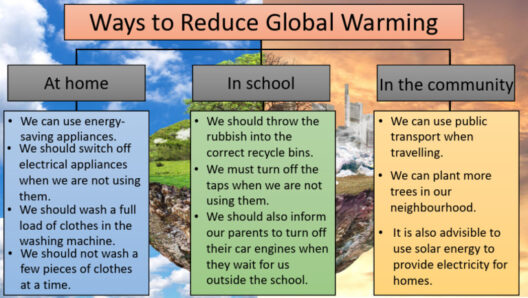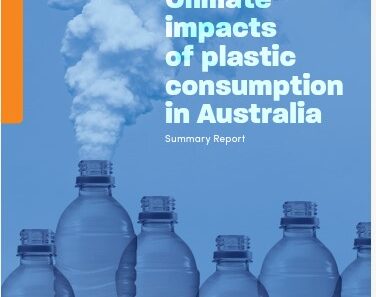The increasing threat of global warming poses an imminent danger to water supplies around the globe. As temperatures rise, the delicate balance of the hydrological cycle is being disrupted. This phenomenon, often referred to as a “thirsty planet,” evokes not merely concern but an urgent call for collective action to redefine how we perceive our water resources. Understanding the nexus between climate change and water availability is crucial for formulating effective strategies to mitigate impending crises.
Climate change is primarily driven by the accumulation of greenhouse gases in the atmosphere. This rise in temperature affects various facets of water supply, such as precipitation patterns, snowmelt timing, and evaporation rates. As global temperatures escalate, regions that previously enjoyed abundant water may find themselves facing unprecedented shortages. These shifts are often unnoticed by those not immediately impacted, yet their ramifications can spiral into extensive socio-economic repercussions.
One of the most striking impacts of climate change on water supply is the alteration of precipitation patterns. Certain areas are experiencing excessive rainfall, leading to flooding, while others suffer prolonged droughts. In regions traditionally reliant on consistent rainfall, erratic weather patterns threaten agricultural output, compromising food security. As crops wither, farmers migrate, and communities become dislocated, it becomes evident that the implications of water scarcity extend beyond mere thirst; they catalyze widespread social and economic upheaval.
Moreover, the timing of snowmelt is crucial for water management in many regions, especially in mountainous areas where melting snow feeds rivers and reservoirs. As average temperatures continue to rise, snowpacks are melting earlier in the year, leading to shifts in hydrological cycles. This change can result in water shortages during critical growing seasons or floods during the spring when too much water rushes into rivers at once, overwhelming infrastructure designed to manage steady flows. Reimagining water management in light of these changes is paramount for ensuring reliable access to this vital resource.
The consequences of these shifts are particularly dire for marginalized communities, which often lack the resources to adapt to changing conditions. Indigenous populations and those living in developing nations are disproportionately affected by water scarcity, exacerbating existing inequalities. The fight against climate change, then, becomes not only an environmental issue but also a question of social justice. Addressing water insecurity must therefore include equitable access to resources and decision-making processes that prioritize the voices of those most affected.
Although the scenarios painted may seem bleak, a shift in perspective illuminates pathways toward a more resilient future. The recognition of water as a finite resource invites a collective re-evaluation of consumption patterns. Cities can initiate transformative policies aimed at sustainable water management practices. Rainwater harvesting, greywater recycling, and stormwater management present innovative, environmentally friendly solutions to bolster water supplies while simultaneously reducing environmental impacts. These approaches reveal a promising transition from viewing water as an inexhaustible resource to recognizing its intrinsic value.
Furthermore, the integration of technology into water management can revolutionize how societies utilize their water resources. Precision agriculture, for instance, allows farmers to optimize water usage while maximizing crop yields, illuminating the potential of innovation in conservation efforts. Data-driven decision-making can enhance efficiency, mitigating waste and creating a more sustainable interaction with water supplies. Utilizing technology creates a harmonious relationship with water, one where resource allocation is respectful of environmental limits.
Another crucial element in addressing water scarcity is fostering public awareness about conservation and the importance of preserving ecosystems. It is essential to highlight the interconnections between climate change, water availability, and biodiversity. Healthy ecosystems, including wetlands, forests, and watersheds, play an integral role in regulating water supplies. Protection and restoration efforts are imperative; they enhance nature’s ability to filter and store water, providing communities with resilience against the vicissitudes of climate change.
Moreover, international cooperation presents another avenue for combating water insecurity. Transboundary water agreements can facilitate diplomatic discussions among nations that share water sources, ensuring equitable distribution and management of this precious resource. Such collaborations are fundamental in an era where climate change transcends borders. By adopting a global mindset, countries can share technology, research, and strategies that foster collaborative resilience against impending crises.
Ultimately, the journey toward a sustainable water future lies in recognizing the intricate relationships among climate change, community resilience, and environmental stewardship. Acknowledging the multifaceted nature of water supply issues compels action that is innovative, equitable, and collaborative. Understanding that every decision—from personal consumption to policy changes—can shape the dynamics of water availability unites individuals, communities, and nations around a common cause.
The concept of a “thirsty planet” serves as both a warning and a catalyst for change. As societies grapple with the challenges posed by global warming, it is essential to embrace a new narrative—one that transforms the perception of water from abundance to a finite resource requiring reverence and respect. By fostering a culture of conservation and collaboration, the potential exists not only to safeguard water supplies but to forge a future resilient to the implications of climate change. With concerted effort, it is possible to turn the tide, ensuring that all inhabitants of the planet can quench their thirst today and in generations to come.








